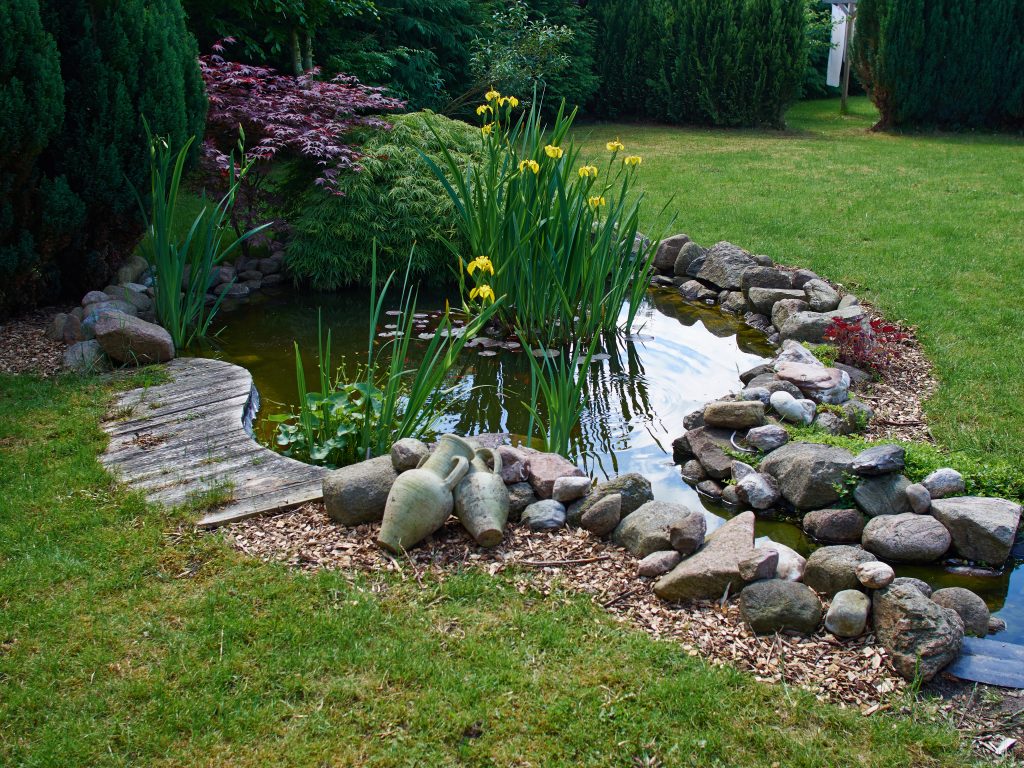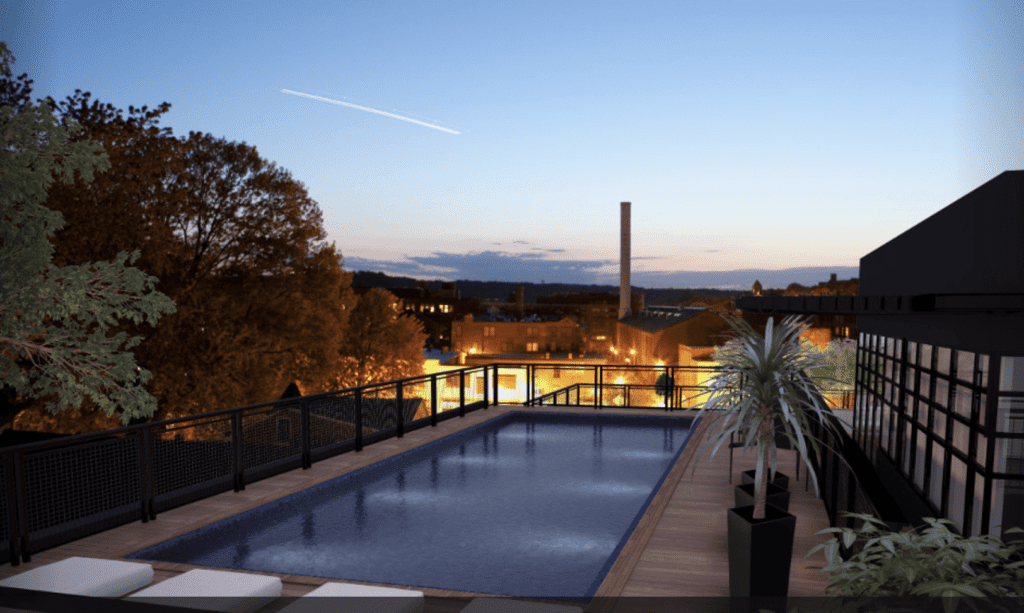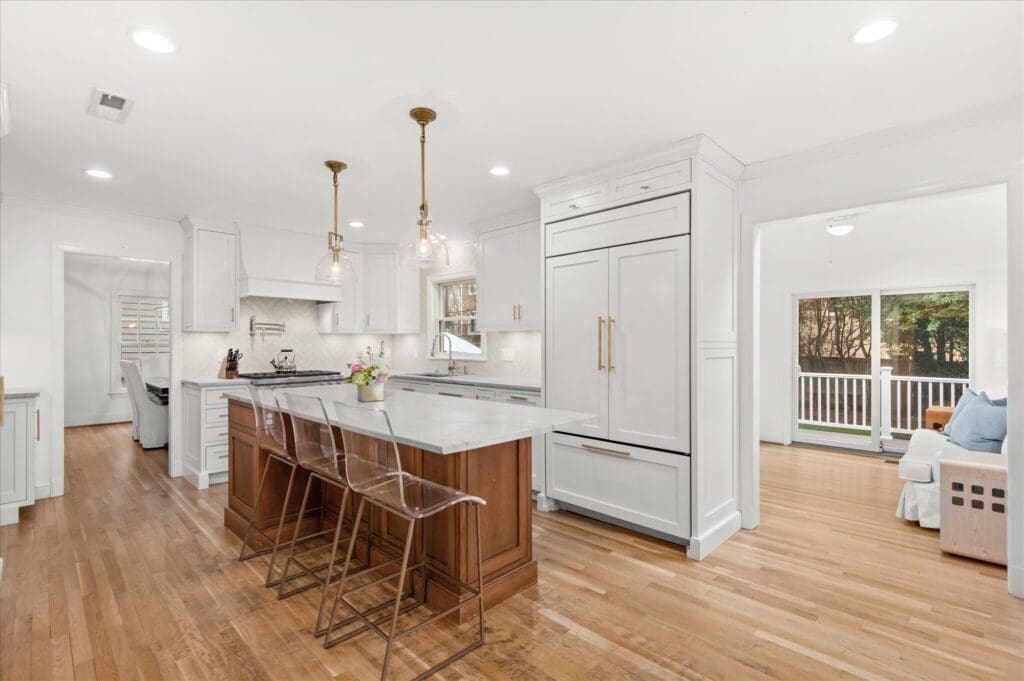Building a Koi Pond:
Your Step by Step Guide
Koi ponds are a hot trend! While they do require a lot of care and upkeep, building a koi pond adds a beautiful touch to your outdoor space. Creating one is far more than just digging a hole and throwing some water and koi in it. We’ve put together some important pointers on how to successfully create and maintain a koi pond.
Planning your Koi Pond
Planning is the most important part of this process. If you poorly plan your koi pond and don’t understand exactly what is needed to maintain it, your pond will be doomed before you even add the fish!
The first step in this planning process is deciding the location and size of your koi pond. You want the location to be somewhere that you can see the pond year round, not just in the warmer months. While this might be a little more work (moving plants, taking out cement, etc). being able to see your pond all the time will be much more rewarding, and you’ll get your money’s worth.
You also want to put the pond in an area of your yard that doesn’t receive direct sunlight. If you don’t have a spot like that, plan on buying some water lilies to create shade in the water.
The koi pond should be at least four feet deep; six is ideal. The pond should not be more than 13 feet wide, making it easy for you to net the fish out of the water when necessary. It is important to have the edges of the koi pond raised at least six inches above the water, so the fish can’t hop out or pull nearby plants into the water.
Equipment Needed
The next most important step is securing the right equipment. While it might seem like a given, there are so many different options available, you need to make sure you are buying the right tools and parts.
A bottom drain will be needed, as well as a water pump that can circulate water throughout the pond. To help keep the pond fresh and clean for your fish, buy a filtration system that has an ultraviolet sterilizer and a protein skimmer. It will also prevent algae and other microorganisms from growing in the waters of your pond. While this system can be a little costly, it will prevent problems down the road that could cost you even more. It also will stop your pond from producing that unpleasant pond smell (which can be hard to fix).
A heater will be needed for any pond water that will drop below 55 degrees in the winter, so keep that in mind too. Koi can live for a long time if they are given a healthy environment; that all comes with the right equipment!
Building the Pond
Go out or online and look at different koi ponds to see what kind you like. You’ll be surprised at all the different options that are available. Make a list of what you do and don’t like about the different koi ponds you see. Then try to figure out how you want the pond and surrounding area to be laid out.
Before you actually physically put your pond together, get a rope or hose and outline where you want your pond to be. Leave that out for a few days to make sure you actually like that shape and location.
After you’ve decided where you want your koi pond, dig out the pond to the depth and width you want it to be. If you live somewhere where ice forms, make sure you slope the sides of the pond roughly 20 degrees so that the ice can expand upward instead of straight across and into your pond lining.
Place the lining into the hole, making sure that you allow the liner to lay on top of all of the curves in the pond. Install the different systems you purchased for your pond before you add the water. Once that is completed, add in the water. The water to koi ratio should be between 150 to 200 gallons for each fish. Place in any water lilies or other plants that you want in your pond.
Ongoing Maintenance
Kois are big eaters, so make sure you feed them often and adequately or they will grab their own food (your nearby plants). It’s important to also keep an eye on the pond’s chemical levels (including pH, nitrate, nitrite, ammonia, chlorine, phosphate, copper, and oxygen), and, if necessary, adjusting them. Add any fertilizer if there are plants living in your pond. Weekly water replacement is important and helps keep the fish healthy. Depending on the season, more water may be replaced.
While this does seem like a lot of work, just set aside a time every week to tend your koi. They’ll appreciate it and live longer.
Building a koi pond adds a great aesthetic to your backyard. They do require a little upkeep, but with the right equipment and care, you will enjoy them for a very long time! To see two of amazing properties with koi ponds, click here and here.
From pool companies to locksmiths; from pest control to window washers, we have recommendations for just about any home maintenance task. Contact us today!
Contact Us
For more home maintenance tips and other real estate articles, sign up for our weekly blog roundup, delivered to your inbox every Monday morning.
Newsletter Signup
2 Comments
Comments are closed.



The most stunning scenery I have seen in your post. Your pond wishes durability with Pondpro2000 for healthful biodiversity, need to monitor and manage many extraordinary variables. Koi can survive easily in its presence.
Awesome Guide!! I was searching on google for how to build a koi pond, and then I reached on your blog, and there I found this informative information. Thank you so much for sharing this kind of information.